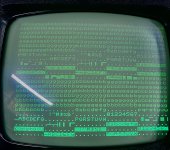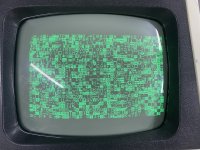daver2
10k Member
I have finally got around to finishing the documentation for my PET EDIT ROM test firmware.
The 'official' Version is V04 and the source, binary, HEX and documentation can be found on my google drive at https://drive.google.com/drive/folders/1fyLbr1kcG98a2FDOMo1H5pj9lIdJpHcx?usp=sharing.
I hope this is of some use to the Commodore PET community in diagnosing and fixing faults so that we can keep these treasured machines in a state of repair for the future.
Bo, any chance of you copying these files to your website?
Enjoy !
!
Dave
The 'official' Version is V04 and the source, binary, HEX and documentation can be found on my google drive at https://drive.google.com/drive/folders/1fyLbr1kcG98a2FDOMo1H5pj9lIdJpHcx?usp=sharing.
I hope this is of some use to the Commodore PET community in diagnosing and fixing faults so that we can keep these treasured machines in a state of repair for the future.
Bo, any chance of you copying these files to your website?
Enjoy
Dave


